Kunsel Kyetsal: Year One
When Golok community leaders and the administration of the Capital City Tibetan High School conceived the plan for a state-of-the-art, scientifically-oriented school facility as a means to Tibetan self-empowerment.
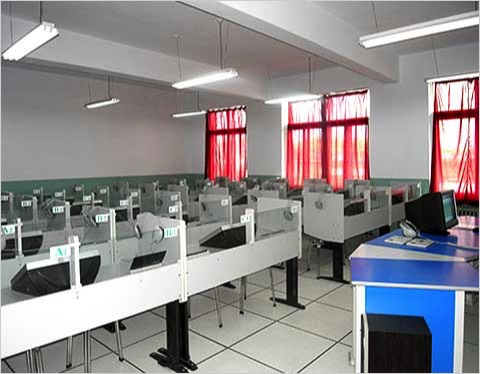
At left is one of Kunsel Kyetsal's two language laboratories. Although at the time of its inauguration in 2007 the building was not fully furnished, equipment for the language laboratories had been procured and installed because of the high priority of language studies.
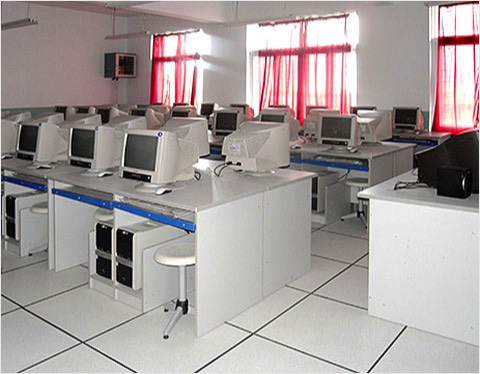
Kunsel Kyetsal has two computer labs, with a total of 96 computers for students' use. Computer literacy is an essential skill for students hoping to enter the skilled workforce. School administration and faculty members have access to additional computer work stations set aside for their use.
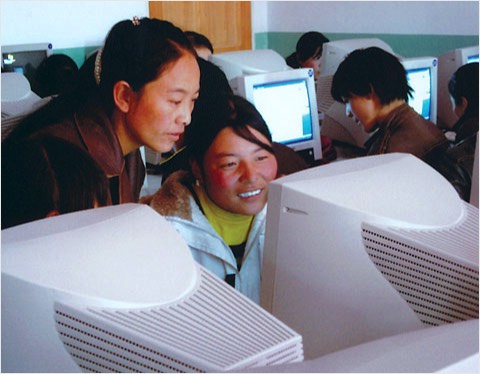
The educational environment has completely changed for these students. They now have academic options which foster a realistic hope of competing for skilled jobs, or preparing for the difficult university entrance exam.
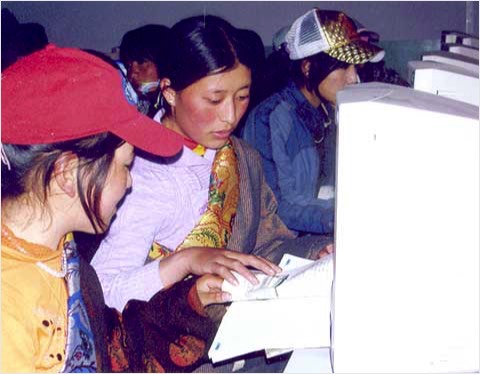
Every new student has graduated from one of Golok's six Tibetan middle schools - there is one in each county. If they arrive with any computer skills at all, it's likely that, like youth around the world, they've been acquired playing computer games at Dawu's internet café.
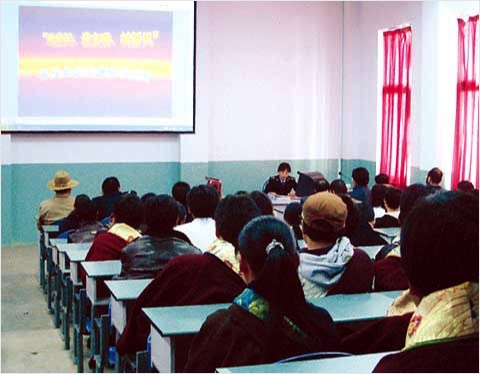
The school's lecture hall is equipped with audio-visual technology for use in presentations, assemblies and other large events.
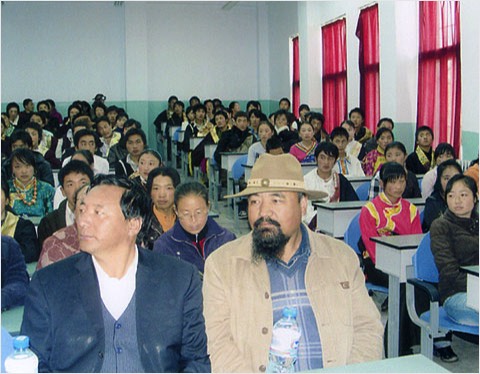
Naturally, the school's administrators and teachers get the choice seats up front in the school's new lecture hall.
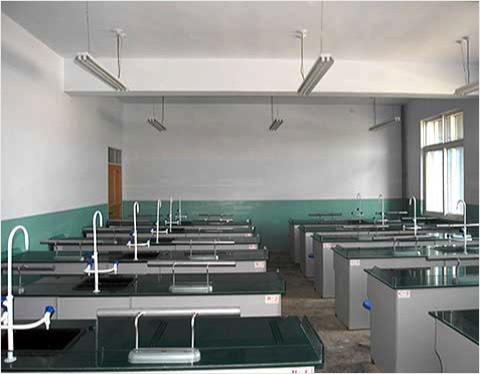
Kunsel Kyetsal has laboratories for studying Biology, Chemistry, and Physical Sciences.
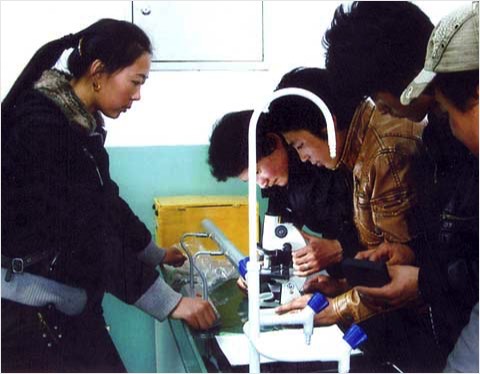
While students studied the sciences before Kunsel Kyetsal was built, without laboratories they had no way to apply their studies through experiments. Such hands-on investigation sparks students' naturally inquisitive minds and is critical to bringing scientific subject matter to life.
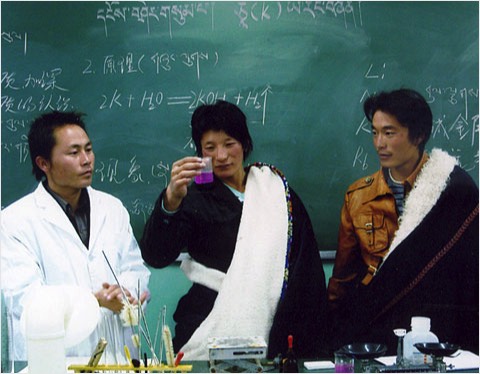
The students were aware that a photographer would be present on this day so they donned their best traditional robes over western clothing to conduct chemistry experiments.
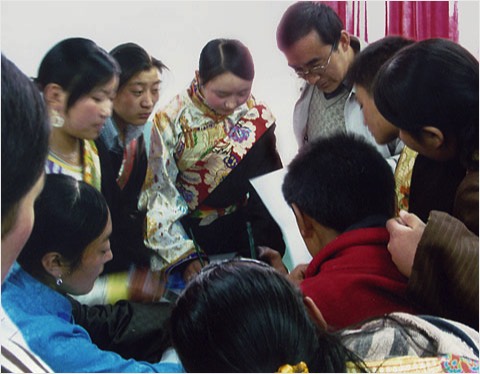
With the commitment to using Tibetan as the language of instruction, whenever possible, many Kunsel Kyetsal instructors are Tibetan. When no Tibetan-speaking teachers can be found to fill a faculty position, other qualified teachers are brought in.
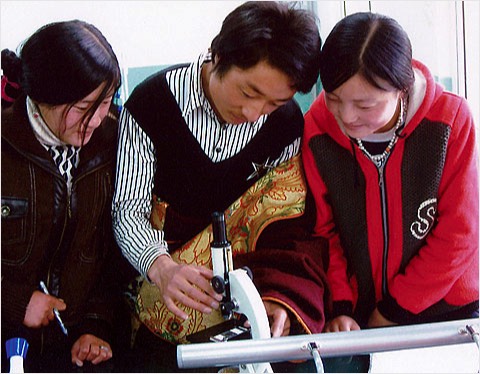
The Kunsel Kyetsal project proposal included an extensive list of educational materials for the science labs. Requested for the biology lab were many models for studying human and animal biology, fossils, plant specimens, slides, and of course microscopes.
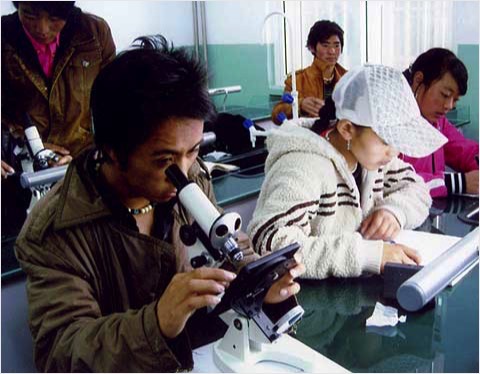
A student takes his turn viewing a slide under a microscope.
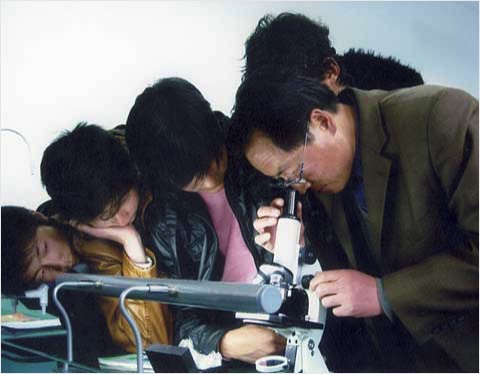
The education provided by monasteries did not include math and science. These courses have been introduced to Tibetans through the secular public school system, and there is a growing interest in integrating the sciences into the Tibetan monastic curriculum.
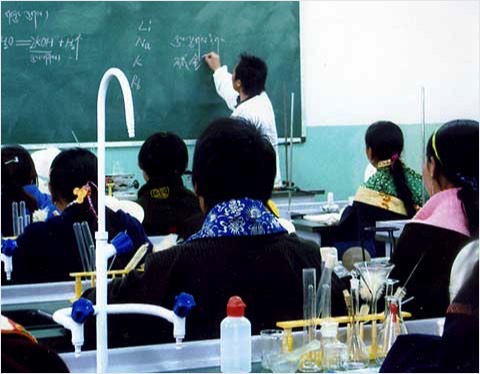
The chemistry instructor writes Chinese below Tibetan on the chalkboard. Both languages are used in this class, so youngsters can study modern science and develop fluency in a second language, while remaining connected to their ancient cultural roots.
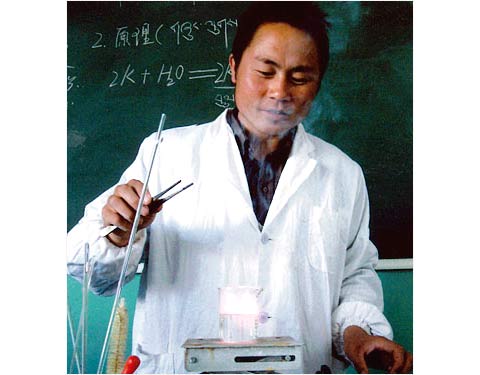
As we have seen first-hand, Tibet's traditional culture is struggling to contend with over a half century of enormous change. Access to a comprehensive, up-to-date education will help Tibetans in Golok find new opportunities to prosper in the midst of these great changes.
More Slideshows
Kunsel Kyetsal - Construction history, the timeline in photos
Kunsel Kyetsal - Inaugural festivities, August, 2007
Kunsel Kyetsal - Inaugural II, more from TSF's visit to Tibet in the summer of 2007
About Golok, Part I
About Golok, Part II
Back to Photo Galleries